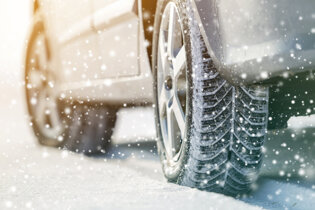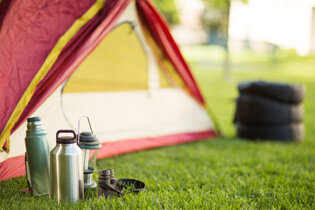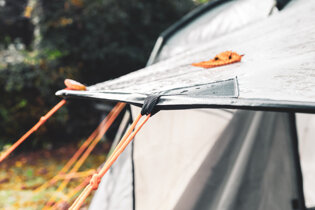Camping in Europe offers a fantastic opportunity to explore diverse landscapes, connect with nature, and experience unique cultures. However, to ensure a safe and enjoyable adventure, it's crucial to be prepared and aware of potential risks. This comprehensive guide will walk you through essential safety tips and guidelines for camping in Europe, from pre-trip preparations to weather-related safety and personal security.
Pre-trip Prep
First off, it's well worth the extra time to dive into the detail of where you're going and pull together some essentials for those times when things do not go to plan. If you're looking at staying local, use our Campsites Near Me finder.
Research your destination and local regulations
Familiarise yourself with local wildlife and potential hazards. Some regions may have free-roaming animals such as deer or venomous snakes, so it's essential to learn how to respond if you encounter them.
Camping is a year-round activity, and weather can be very changeable. Pack clothing and gear suited to the expected temperatures and conditions. Consult our camping blog for further information on camping equipment and clothing.
Each country may have different camping regulations, such as designated campsites, wild camping rules, and fire restrictions. Ensure you're aware of these rules before setting off.
Assemble a comprehensive camping safety kit
A well-stocked first aid kit is vital for addressing minor injuries and illnesses. Include bandages, antiseptic wipes, pain relievers, and any necessary prescription medications. Consider taking child-specific medications as well as any ID cards and travel insurance.
Prepare for unexpected situations with a whistle, headlamp or torch, spare batteries, waterproof matches, and a space blanket. This is especially important if you are doing remote camping or mountain camping.
A versatile tool invaluable for camping tasks and potential emergencies. Keep these away from children as they can be very dangerous for little fingers.
Plan your route and share your itinerary with someone
Before embarking on your adventure, map out your intended route and share your itinerary with friends or family. This ensures that someone knows your whereabouts in case of an emergency. This is especially important for solo campers and if you are camping in remote areas
Acquire appropriate travel insurance
Purchase travel insurance that covers camping activities and any potential medical expenses or evacuation costs. The NHS can provide you with a GHIC card which we recommend everyone has.
Getting there
When driving in Europe, familiarise yourself with local traffic laws, especially when crossing borders. Ensure you always have important documentation, such as passports and insurance. Always obey speed limits, wear seat belts, and avoid using mobile phones while driving.
Ensure your camping gear is securely fastened to your vehicle, using roof racks or cargo carriers when necessary. This prevents potential accidents caused by loose items falling from your vehicle.
On long drives, take regular breaks to rest and stay hydrated. Avoid driving during night hours unless absolutely needed when you're more likely to be tired.
Setting up
Always choose a designated campsite or a legal wild camping location. Avoid setting up near water sources, cliff edges, or areas prone to flooding.
Ensure your tent is securely pitched, using appropriate tent pegs and guy lines. Anchor your tent correctly to withstand potential wind or storms.
Keep food and waste securely stored in sealed containers or bags away from your sleeping area. This helps prevent attracting wildlife to your pitch.
Follow local regulations regarding campfires. If permitted, create a fire ring or use a portable fire pit, and always have a method to extinguish the fire nearby.
Outdoor activities
Following marked trails Stick to established trails and avoid wandering off the path, which can lead to getting lost or causing environmental damage. Familiarise yourself with the approximate timings and layouts of any trails.
Carry a map and compass or GPS device Navigation tools are essential for staying on track and avoiding getting lost. Make sure you know how to use them effectively and the locations of any waypoints.
Staying hydrated and carrying adequate food Carry enough water and snacks to sustain you throughout your hike, particularly in hot weather or on longer treks. Even in a colder climate, you can still dehydrate from sweat.
Dressing appropriately Wear layers and choose clothing suited to the weather and terrain. This includes wearing sturdy hiking shoes or boots for ankle support and traction.
Assessing water conditions Before swimming, kayaking, or engaging in other water activities, check local water conditions and currents to ensure it is safe to proceed.
Wearing a life jacket When participating in water activities, always wear a life jacket or buoyancy aid, regardless of your swimming ability.
Be cautious on swimming alone Swim with a friend or in a group to ensure someone can assist or call for help if needed.
Use a well-maintained bike Regularly check and maintain your bicycle to ensure it is safe and functioning properly.
Wearing protective gear Wear a helmet and other appropriate protective gear, such as gloves and knee pads, to reduce the risk of injury.
Following traffic laws and regulations When cycling on roads, follow local traffic laws and use hand signals to communicate your intentions to other road users.
Regularly check the weather forecast and be prepared to adjust your plans if necessary. Be aware of potential risks, such as storms, heavy rain, or extreme heat. Consider downloading apps on your phone to track weather patterns.
If you're caught in a storm, find shelter in a vehicle or a substantial, enclosed building. Avoid taking shelter under trees or in small, open structures.
Stay away from bodies of water and wet ground during a storm, as they can conduct electricity
If you see lightning, count the seconds until you hear thunder. If it's less than 30 seconds, you're at risk and should seek shelter. Wait 30 minutes after the last lightning or thunder before resuming your activities.
Drink plenty of water throughout the day, even if you don't feel thirsty.
Limit physical activity during the hottest part of the day and take regular breaks in the shade.
Apply sunscreen, wear a hat, and choose lightweight, light-coloured clothing to protect your skin from sunburn.
You may also like...




